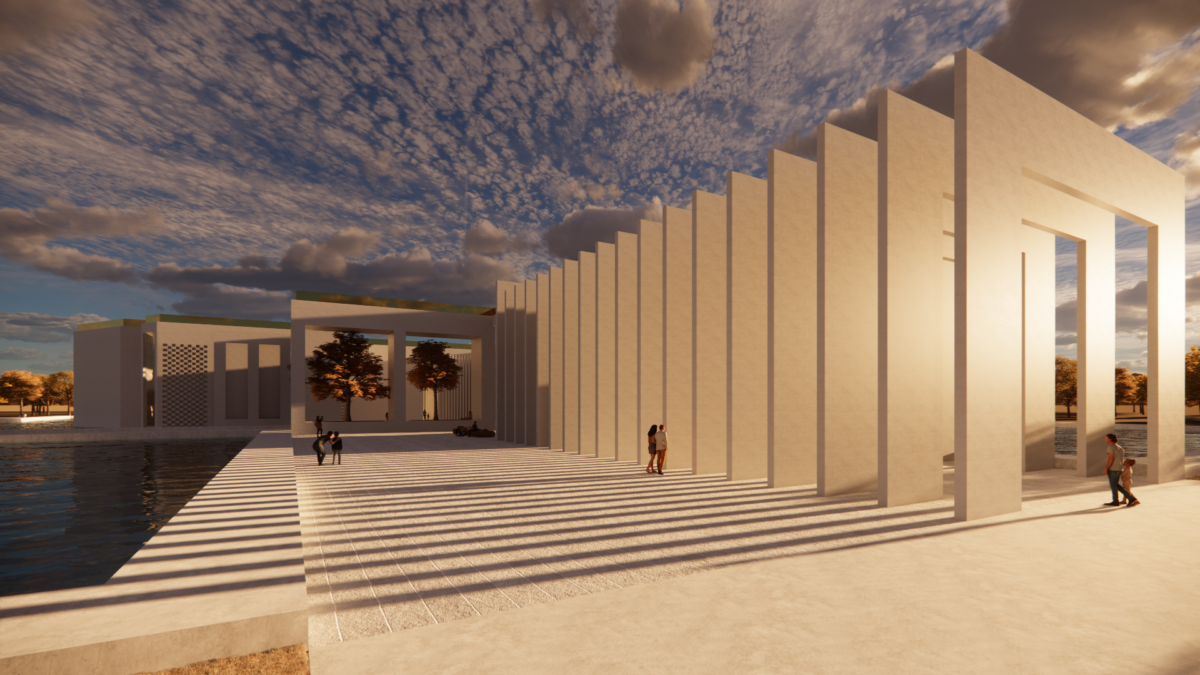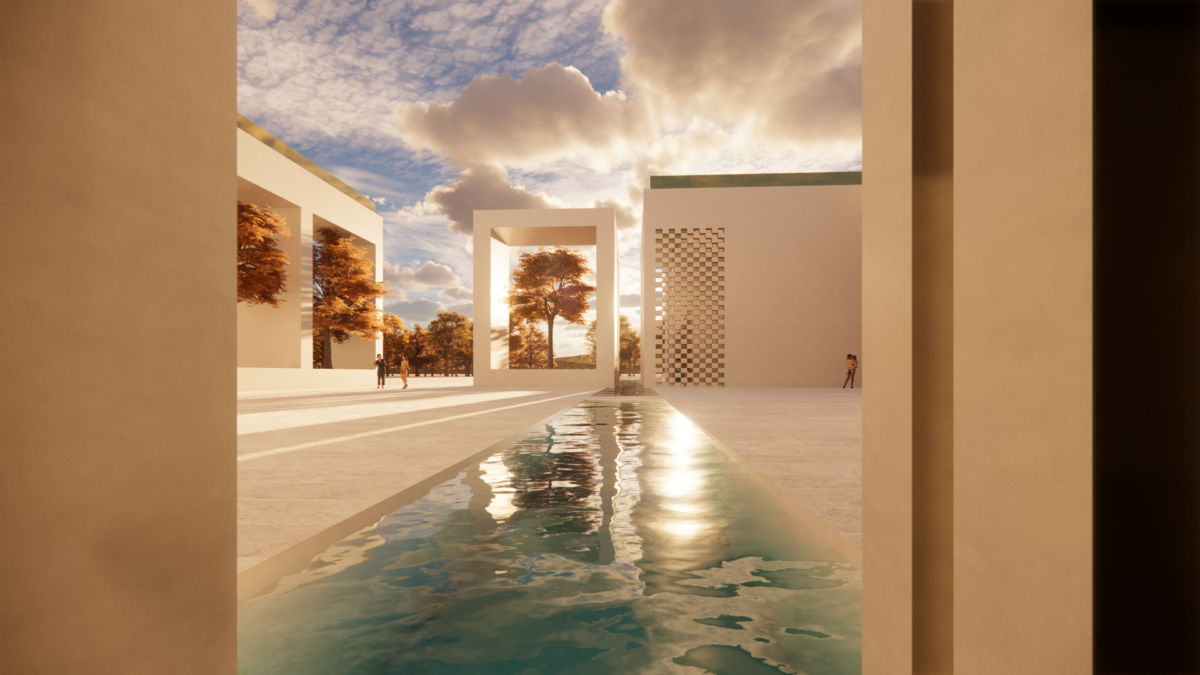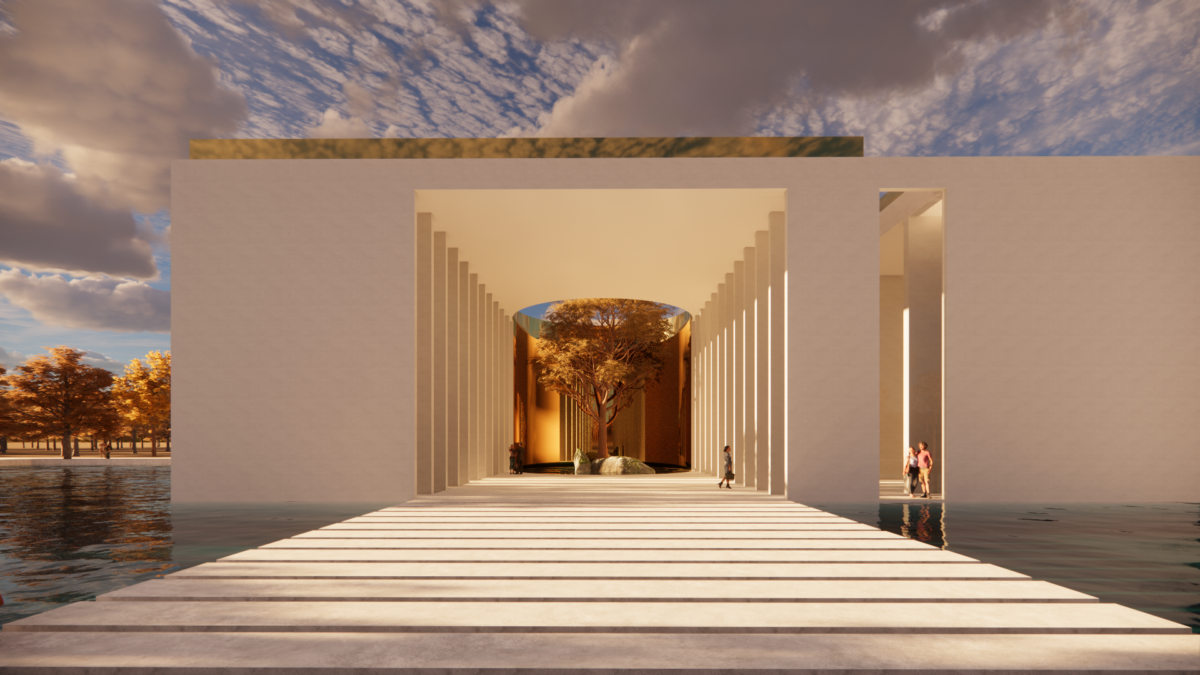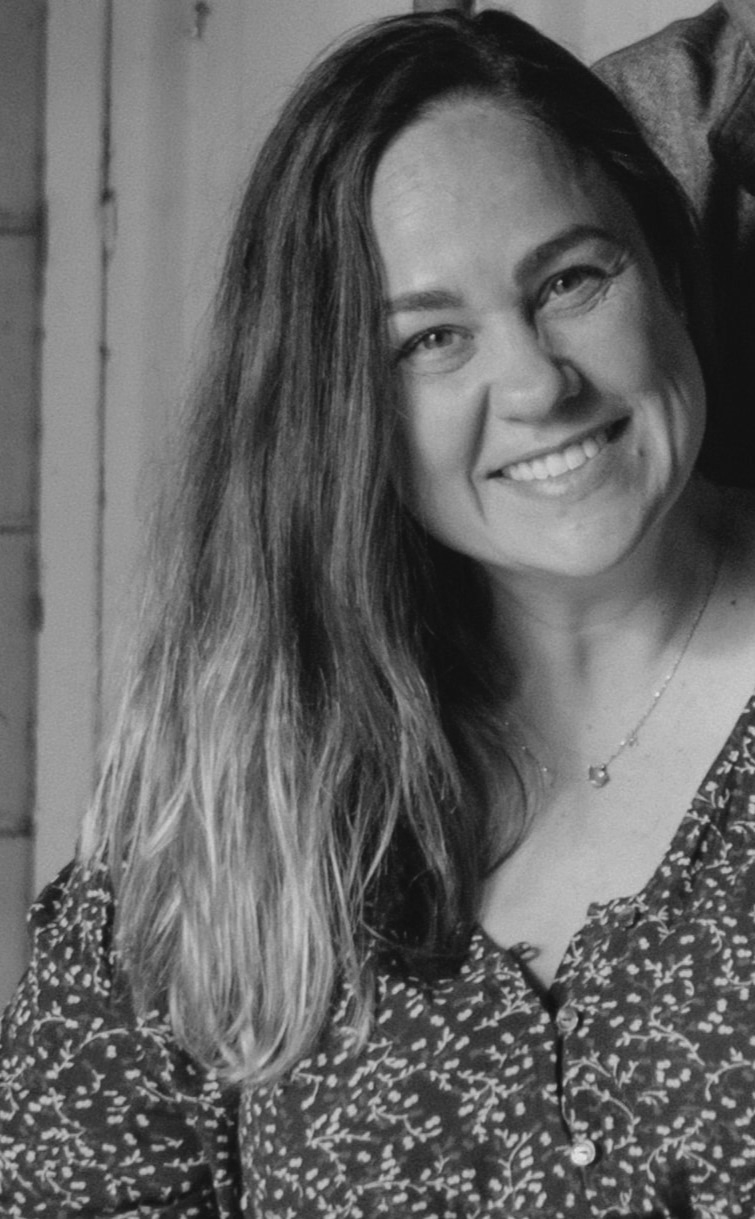
In 2016 I arrived in Australia from Brazil with a Bachelor Degree in Architecture and Urban Design to pursue a long-held dream.
Now, seven years later, after completing a Bachelor in Interior Design (Residential) at Billy Blue College of Design, I am looking to immerse myself in a workplace where my passion for design will grow even more, and my skills can be refined.
My work ethic, dedicated attention to detail, and passion enable me to produce high-quality work.
I believe that a well-designed environment can reflect people’s personality, influence their behavior, and improve their lives.
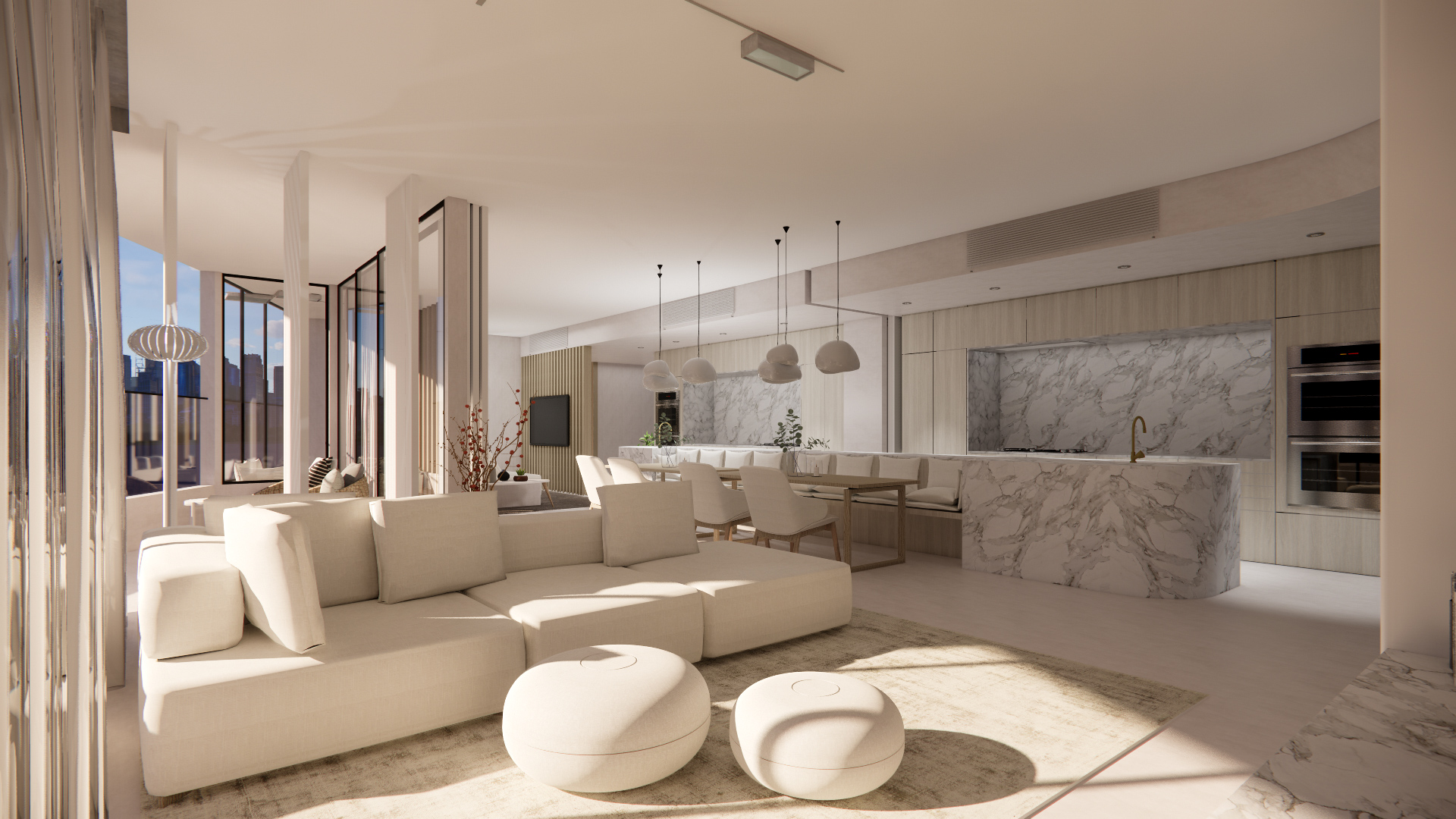
Imagined as sanctuaries where tenants can immerse themselves for three days or even three months the Mnemosyne Serviced Apartment units were created by combining both linear and curved elements and gestures of calm and retreat. The use of floor-to-ceiling windows and openings to the balconies create flowing visuals of the city skyline and allow for natural light-filled rooms emphasising the relaxing ambiance.
The primary emphasis of the project lies in the qualities and textural characteristics of the utilised materials. This approach creates a distinct experience for individuals as it resonates with a residential setting, offering a tangible sense of a temporary living space.
The curved lines at the entrance of both apartments work as a guide inviting people to enter. Views of the city work as the perfect background for the various spaces that are delimited by elements such as furniture, rugs, lights, colours, etc.
The back-to-back apartments were organised in a way that when dividing panels are open, they merge into one, conveying the idea that the units are one generously proportioned apartment. Three panels are bi-fold to the left (when looking from Unit A), and the last 6 panels are stacked into the space on the right side (between the two kitchens).
The highlights of apartment A are the balcony with large comfortable seating in front of an outdoor fireplace and the ensuite with a bathtub in front of a large floor-to-ceiling window filling the room with natural light and city views. In apartment B the open balcony with a spa, shower, and fireplace provides the most exquisite experience for the tenants.
Whether the apartments are combined or beside each other, their enduring design aims to harness the comfortable and serene influence of the minimalist aesthetic, providing an unforgettable experience for the residents.
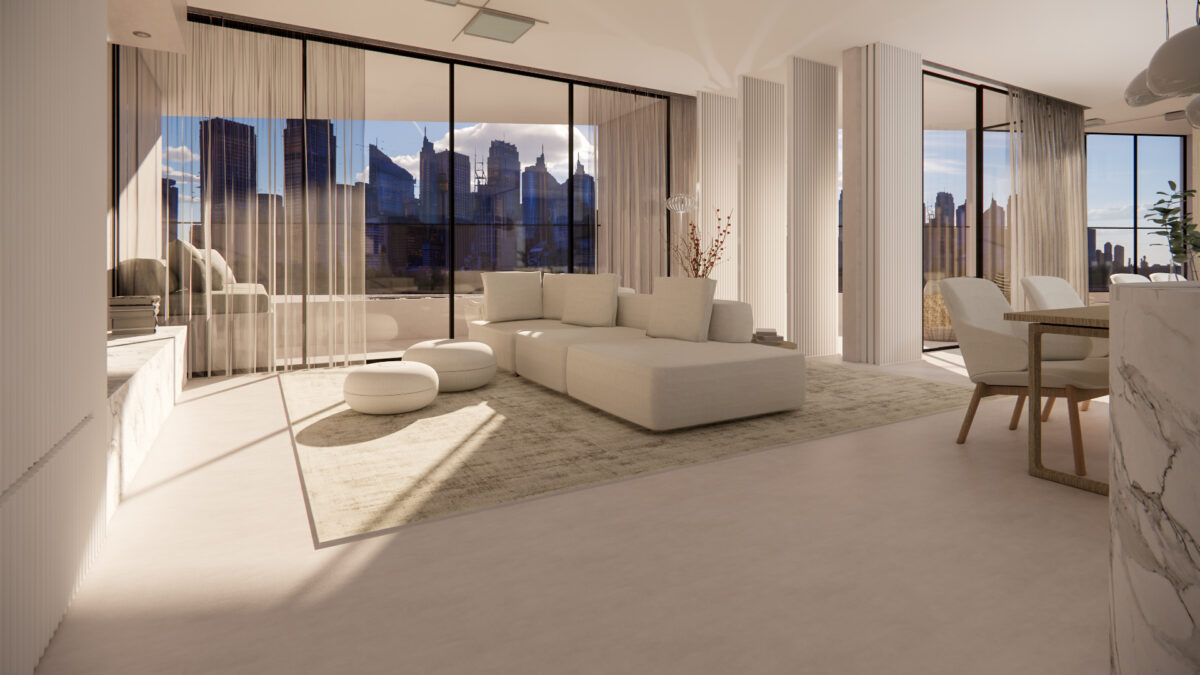
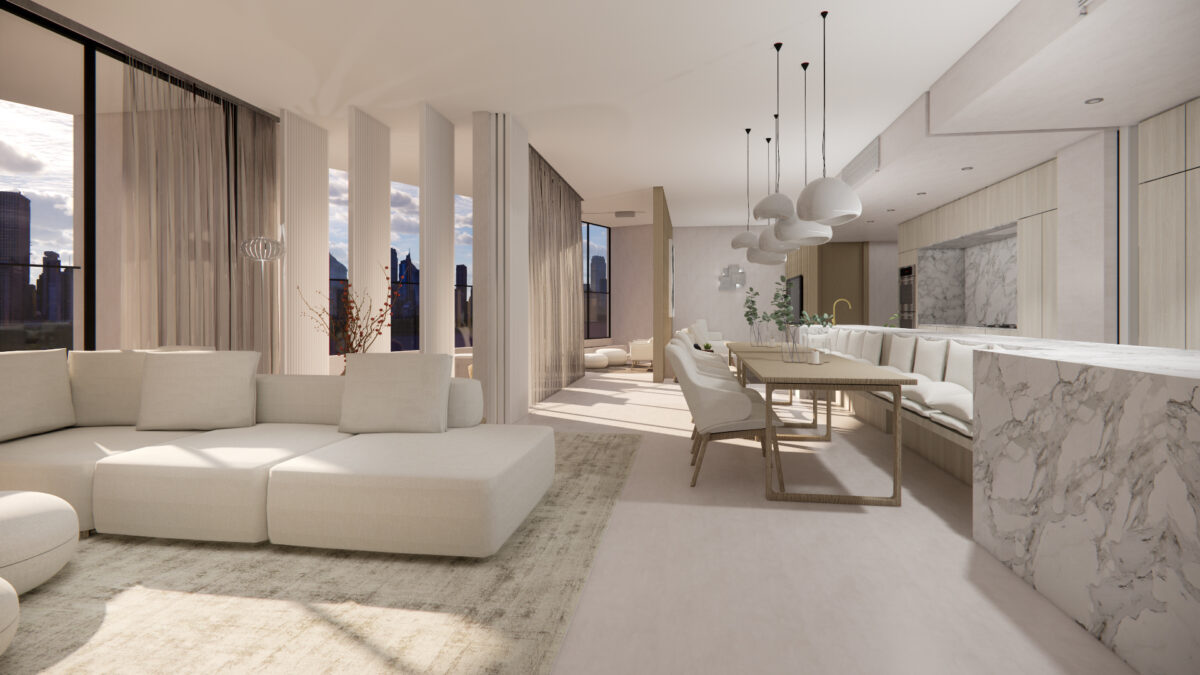
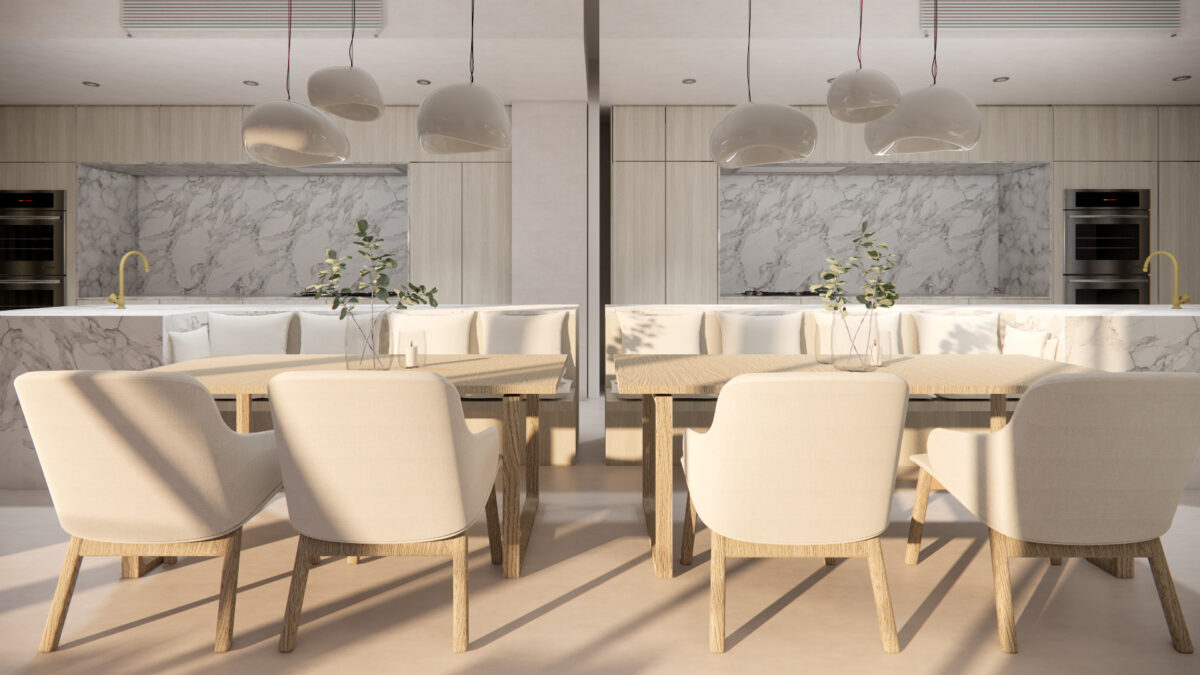
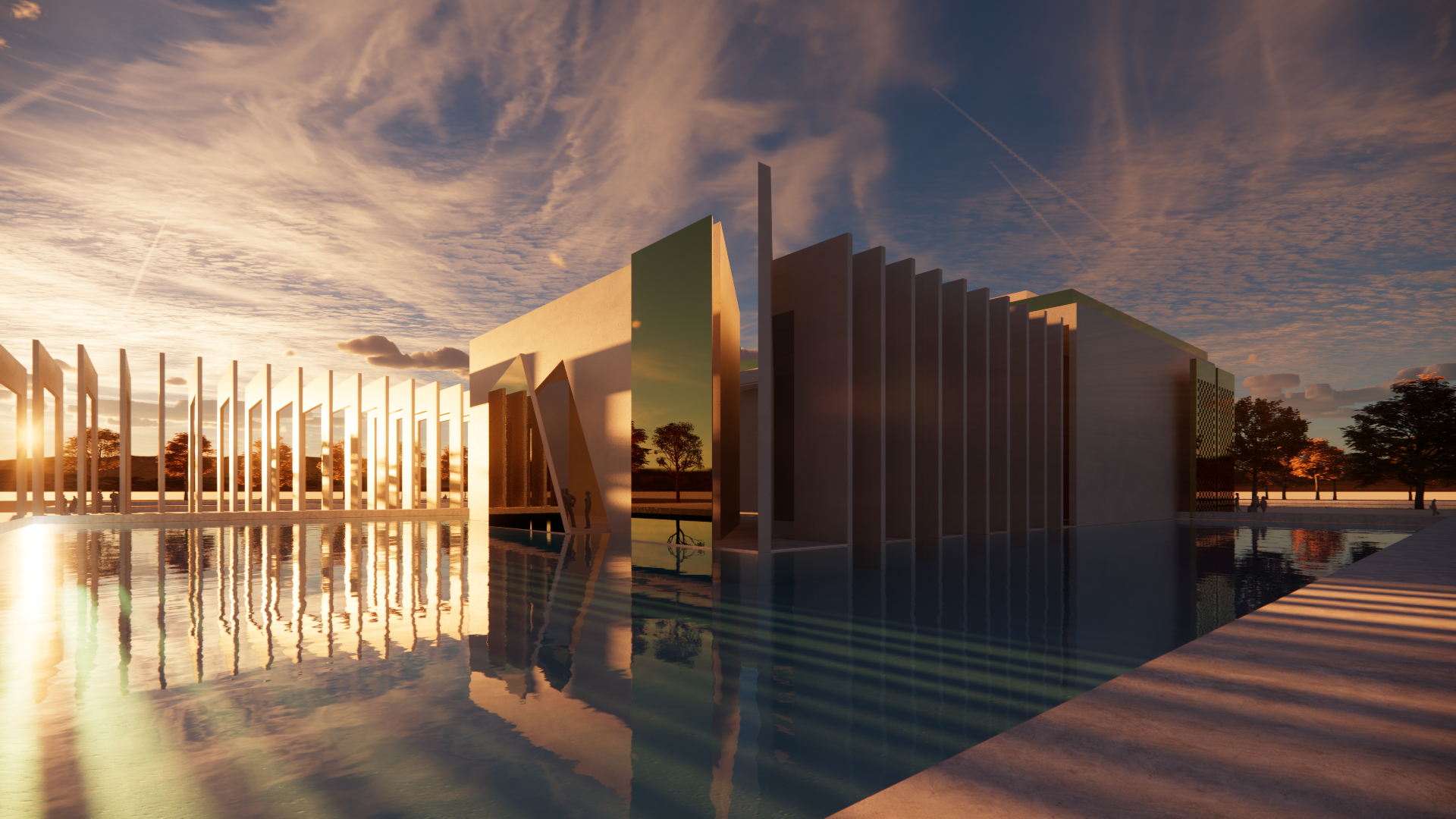
Based on the Cubus method, developed by Professor Robert Tuckwell (Billy Blue College of Design/Torrens University), students were challenged to study a series of patterns and develop them further, from that choose the most interesting one to be transformed into a floor plan. This was done systematically by observing how each pattern has its own black-and-white/full-and-empty spaces. With these spaces delimited on paper, it seemed as though the volume of the building coming up at the same time, so we experimented with different wall heights until we achieved the desired building form.
Not only was a new design method explored when creating the art gallery, but I also salvaged Louis Kahn’s memories and teachings, which reclaimed all the value and importance of rooms.
With an interesting and bespoke shape on my hands, I was able to imagine this design shining beneath the sunlight of the northeast coast of England, by the village of Bamburgh in Northumberland, where Bamburg castle sits today.
The Serenity Art Gallery is where the past and the present have been fused together. A space made not just for exhibitions, but a place to enjoy, contemplate, and appreciate every second of the day through the playful shadows that are constantly changing because of the sunlight.
The sand colour of the concrete was carefully chosen as the main material. This conveyed the concept of the building blending with the surrounding landscape, while also providing a crisp and luminous backdrop for the artworks showcased in the exhibition.
The Serenity Art Gallery has a minimalist architectural approach and materiality since it is a place to find connections - a connection between architecture and landscape, interior and exterior, person and building, and a connection with a person's inner thoughts, emotions, and identity. The building, therefore, could not talk louder than anything within it.
